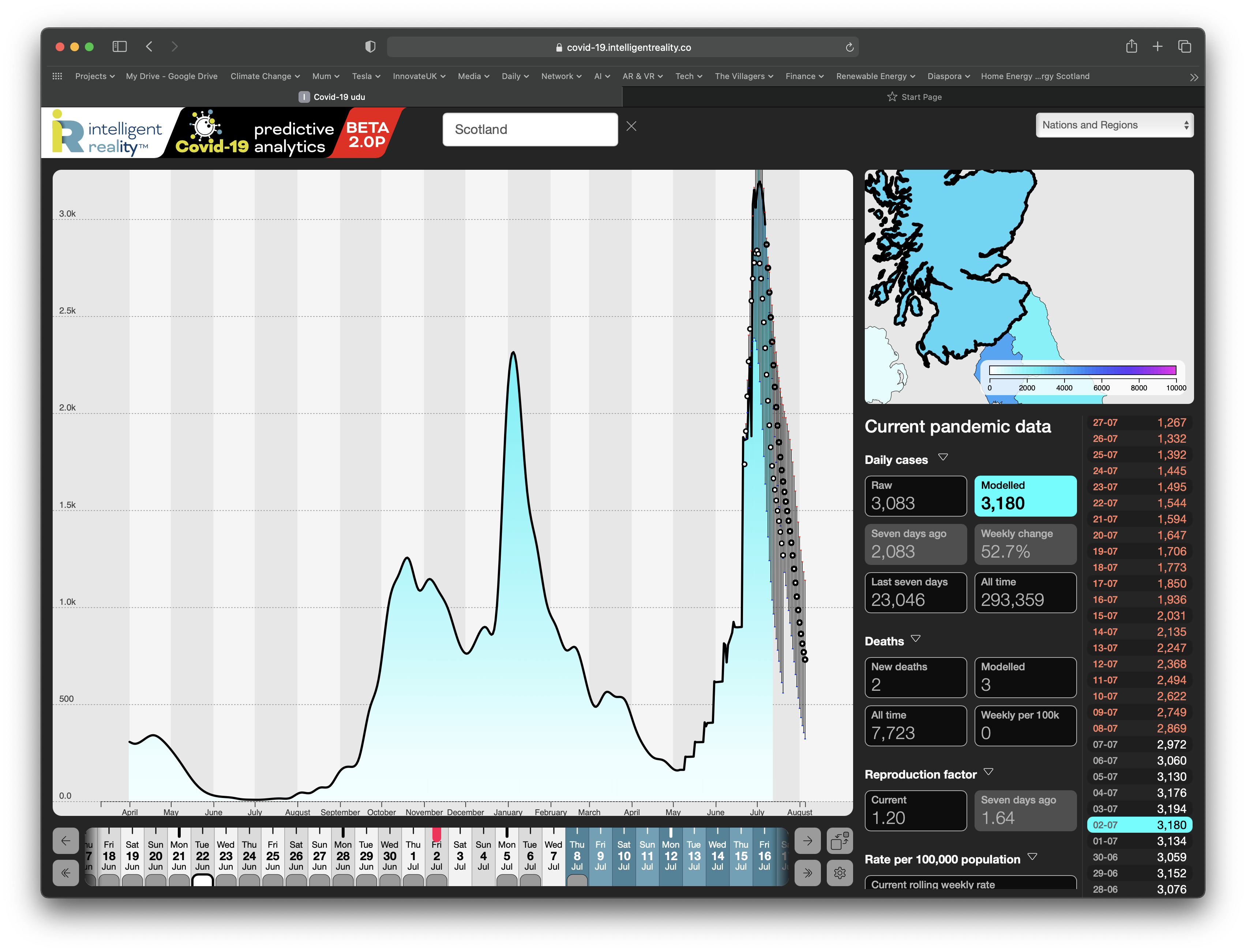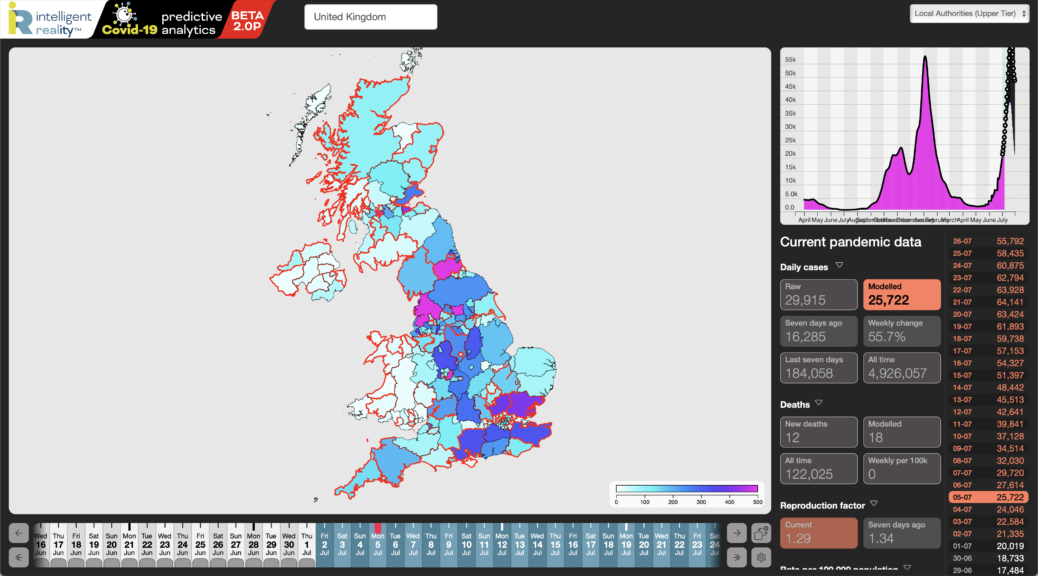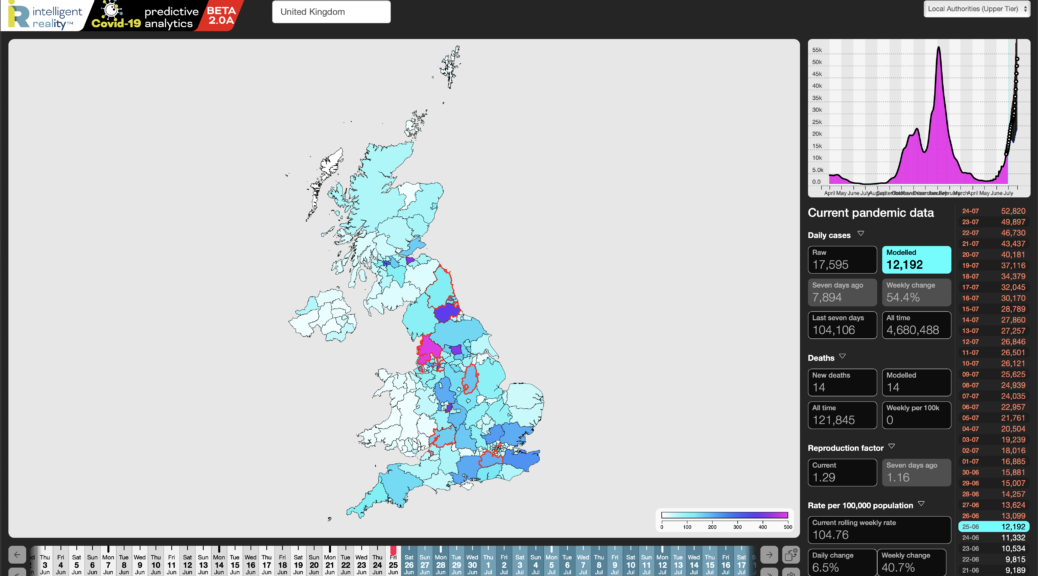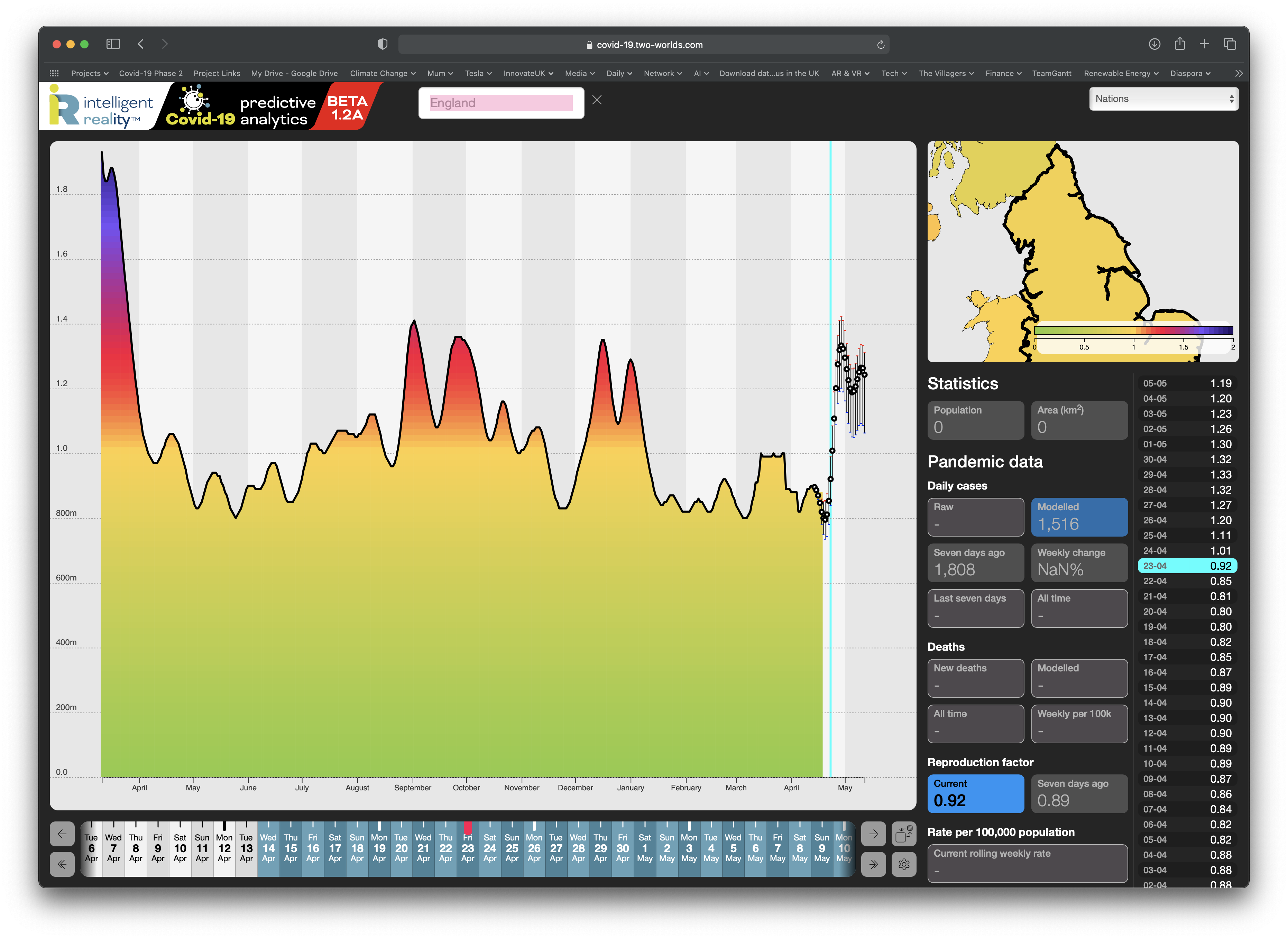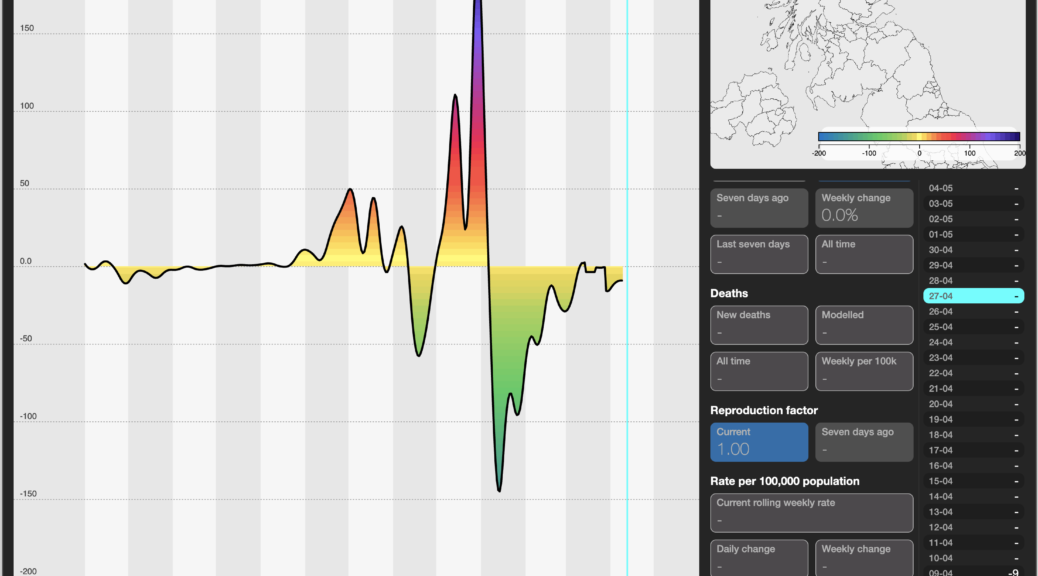I owe our system an apology. After it started forecasting a downturn in Covid-19 cases for Scotland, I was dubious, suggesting that because it didn’t ‘know’ about the combination of the final Euro2020 matches or the relaxing of restrictions at a time of rising case numbers, it was being overly optimistic. I was wrong. I owe it the computational equivalent of a beer or two.
From about 17 June, it was forecasting a peak in case numbers for Scotland on or around 5 July, even if it was short on actual case numbers. Since 22 June though, it’s been spot on in both curve and case numbers. The image is of our case number model, plus our current forecast, overlaid with our forecast from 22 June. Basically, it nailed it. The lesson is not to argue with a system that uses more variables than I can count without taking my socks off.
